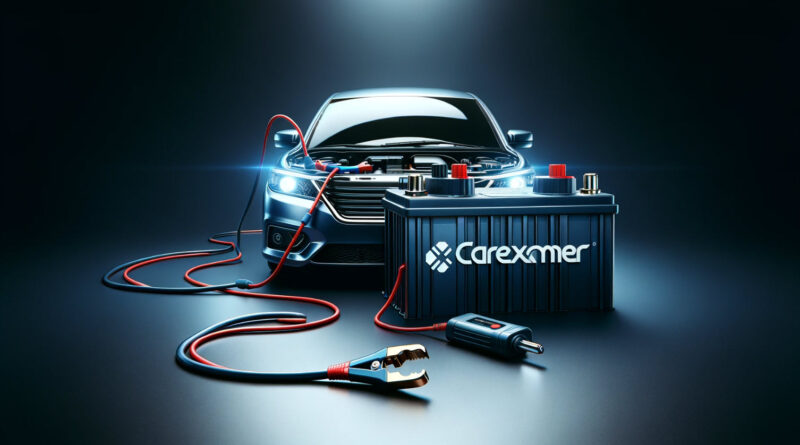Car Battery Conditioners and Trickle Chargers What to Know
Let’s dive into everything you need to know about how Car Battery Conditioners and Trickle Chargers work and when you should be using them. Ever had your car battery die just when you need it the most? If you’ve experienced that frustration, then these tools are about to become your new best friends. These devices are designed to keep your car’s battery in top shape, especially if you don’t use your car regularly.
What Is a Car Battery Conditioner?
A car battery conditioner is a clever little device that helps keep your battery healthy over time. If your car sits unused for long periods, a battery conditioner monitors and maintains the battery’s charge, so it’s always ready to go when you need it.
How It Works:
A battery conditioner steps in when your battery charge gets low. It senses when the voltage drops and delivers a small, necessary charge to top it up. This keeps your battery from running flat or deteriorating, which is especially useful for cars that aren’t driven regularly.
What Is a Trickle Charger?
Device that keeps your battery charged but works slightly differently. It delivers a constant, low-level charge to your car battery, making sure it doesn’t run out of juice. While it’s similar to a battery conditioner, a trickle charger doesn’t monitor the battery’s health—meaning it keeps charging whether the battery needs it or not.
How It Works:
A trickle charger provides a steady stream of power to your car’s battery, keeping it from losing charge over time. It’s great for maintaining a battery when your car is stored for a season or not in regular use, but you’ll want to be cautious about leaving it on too long to avoid overcharging.
What’s the Difference Between a Conditioner and a Trickle Charger?
Although both devices serve the same purpose—keeping your battery charged—there are a few key differences:
- Battery Monitoring: A battery conditioner keeps an eye on your battery’s voltage and only charges when needed. A trickle charger, on the other hand, keeps charging regardless of the battery’s state.
- Risk of Overcharging: Battery conditioners are designed to prevent overcharging, while trickle chargers can sometimes overcharge if left plugged in too long.
- Best Use: A battery conditioner is ideal for long-term maintenance, while a trickle charger is great for short-term storage to keep the battery fully charged.
When Should You Use a Battery Conditioner?
Battery conditioners are your go-to solution if:
- You don’t drive your car frequently, and it spends long stretches in the garage.
- You want to keep your battery healthy and lasting as long as possible.
- Your car is stored for a significant amount of time, like during winter or an extended trip.
They’re especially useful for classic cars, motorcycles, or any vehicle that may sit unused for a while. By using a battery conditioner, you’ll ensure your battery stays in great shape and ready to start.
When Should You Use a Trickle Charger?
A trickle charger is perfect for:
- Maintaining your car battery’s charge during short-term storage.
- Ensuring your car battery is ready for use when it’s parked for a few weeks or months.
Trickle chargers are handy for people who want to make sure their battery stays topped up but don’t need long-term monitoring. Just remember to disconnect it once the battery is fully charged to avoid overcharging.
Benefits of Using Battery Conditioners and Trickle Chargers
1. Extend Battery Life
Keeping your car battery charged prevents it from deteriorating, which can significantly extend its lifespan.
2. Prevent Battery Drain
Leaving a car unused for long periods can cause the battery to drain. Using one of these devices ensures the battery stays charged and avoids that frustrating “dead battery” scenario.
3. Avoid Unexpected Breakdowns
By maintaining your battery’s charge, you’re far less likely to experience a flat battery when you’re ready to hit the road.
How to Use a Car Battery Conditioner or Trickle Charger
Using these devices is pretty simple:
- Connect the Clamps: Attach the positive (red) and negative (black) clamps to the correct terminals on your car battery.
- Plug It In: If it’s powered by electricity, plug the device into an outlet.
- Let It Do Its Job: The device will either maintain the battery (conditioner) or keep it charged (trickle charger).
- Disconnect Safely: When you’re ready to drive your car again, unplug the device and remove the clamps.
Are They Safe for All Batteries?
Most battery conditioners and trickle chargers are designed for lead-acid batteries, which are commonly found in cars. If you have a different type of battery, like lithium-ion, make sure to check the device’s compatibility before using it.
What to Look for When Choosing a Battery Conditioner or Trickle Charger
- Automatic Shut-Off: Choose a device with an automatic shut-off feature or maintenance mode to prevent overcharging.
- Compatibility: Make sure the device works with your battery type, especially if you have a lithium-ion battery.
- Ease of Use: Look for user-friendly features, like clear instructions and easy-to-read displays.
Both are useful tools to keep your car battery healthy, especially when it’s not being used regularly. They’ll save you from the hassle of dealing with a flat battery, extend your battery’s lifespan, and keep your vehicle ready to go. Whether you’re storing your car for the winter or just want to ensure your battery stays charged, these devices are a smart investment for any car owner.
Buying a used VW. Buying used vauxhall, BMW, Jaguar, Ford, Volvo, Range rover, Bentley, Aston Martin, Porsche, Ferrari, Lamborghini, Maserati, Hyundai, Tesla, Honda, Pagani

